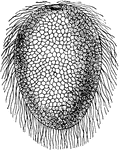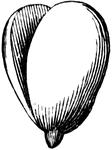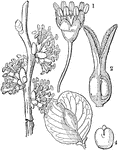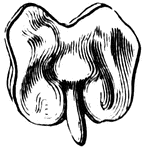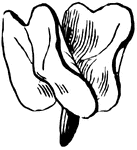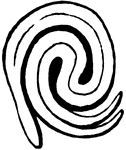
Longitudinal section of an acorn
A longitudinal section of an acorn, showing two cotyledons and the embryo.

Annona
"Anona furfuracea. 1. an expanded flower; 2. a vertical section of male and female apparatus, which…

Arrowgrass
"Triglochin palustre. 1. A flower; 3. a ripe fruit; 4. one ripe carpel opened and exhibiting a seed;…

Wild Arum
"1. Spathe of Arum maculatum; 2. its spadix loaded with flowers; 3. an anther; 4. a transverse section…

Beefwood
"Casuarina female; 2. male; 3. male flower; 4. female flower; 5. the ripe valves of the calyx, from…
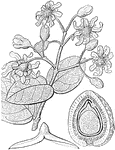
Boldo
"Boldoa fragrans. 1. a section of the ripe fruit; 2. the embryo shown separately." -Lindley, 1853
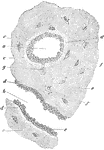
Formation of Compact Bone in a Human
Transverse section of femur of a human embryo about eleven weeks old. Labels: a, rudimentary Haversian…

Common Bulrush
"Typha latifolia; 2, its fruit; 3, a section of the seed; 4, the embryo; 5, a stamen." -Lindley, 1853

Calathea
"Calathea villosa; 1. a flower cut open; 2. a transverse section of the ovary; 3. a perpendicular section…
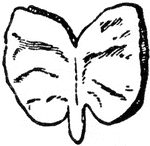
Calystegia Sepium Embryo
An illustration of a Calystegia sepium embryo. Calystegia sepium (Larger Bindweed, Hedge Bindweed, or…

Chalk Sponge Gastrula
"Gastrula of a Chalk-sponge (Olynthus). B, longitudinal section through the axis: g, primitive intestine;…
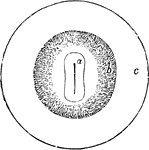
Vascular Area in the Chick
Diagram showing vascular area in the chick. A, area pellucida; b, area vasculosa; c, area vitellina.

Dipterocarpus
"Dipterocarpus trinervis. a an anther; b a perpendicular, c a transverse, section of an ovary; d a fruit;…
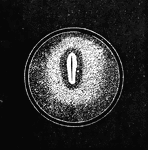
Impregnated Egg
Impregnated egg, with commencement of formation of embryo; showing the area germinativa or embryonic…
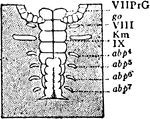
Embryo
"Portion of a similar embryo at a later stage of growth. The praegenital somite, VII PrG, is still present,…

Embryo at Fourth Week
A human embryo of the fourth week. I, the chorion; 3, part of the amnion; 4, umbilical vesicle with…

Embryo Chick
Embryo chick (36 hours), viewed from beneath as a transparent object (magnified). Labels:pl, outline…
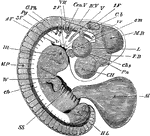
Embryo Chick at Fourth Day
Embryo chick at fourth day, viewed as a transparent object, lying on its left side. CH, cerebral hemispheres;…

Cells of an Embryo Chick
A transverse section through an embryo chick (26 hours). Labels: a, epiblast; b, mesoblast; c, hypoblast;…

Embryo of Fifth Week
Human embryo of fifth week with umbilical vesicle. The human umbilical vesicle never exceeds the size…
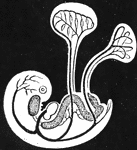
Embryo Showing Course of Circulation
Diagram of young embryo and its vessels, showing course of circulation in the umbilical vesicle; and…
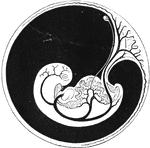
Embryo Showing Course of Circulation
Diagram of embryo and its vessels, showing course of circulation. The large umbilical arteries are seen…

Form of the embryo
"Figure 2 gives an outline of its form; the arrows at the side of the head show the currents of water…
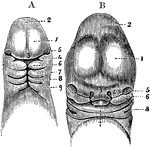
Head of an Embryo
A, Magnified view of the head and neck of a human embryo of three weeks. Labels: 1, anterior cerebral…
Longitudinal Section of an Embryo
Diagram of a longitudinal section of an embryo, showing the different areas of the blastodermic vesicle.…
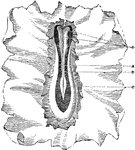
Germinal Membrane of a Dog
Portion of the germinal membrane, with rudiments of the embryo, from the ovum of a dog. The primitive…

Common Hop
"Humulus Lupulus. 1. male flower; 2. female; 3. section of ovary; 4. ripe fruit; 5. section of it, showing…
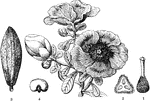
Kielmeyera
"Kielmeyera rosea. 1. the pistil; 2. a transverse section of it; 3. a ripe fruit; 4. embryo." -Lindley,…
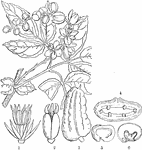
Lardizabala
"Lardizabala triternata. 1. petals and stamens of male flower; 2. carpels; 3. fruit of a Lardizabala;…
Lattice Leaf Plant
"1. Leaf of Ouvirandra fenestralis; 2. a flower cut open; 3. section of a ripe carpel of O. Bernieriana;…
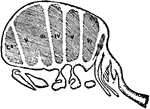
Limulus Longispina
"Section through an early embryo of Limulus longispina, showing seven transverse divisions in the region…
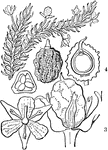
Mayaca
"Mayaca vandellii; 1. a flower; 2. a cross section of its ovary; 3. a seed vessel; 4. two seeds, one…

Moonseed
"Cocculus macrocarpus. 1. male flower; 2. a petal and stamen; 3. a cluster of fruit; 4. seed; 5. section…
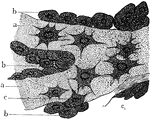
Osteoblasts from Embryo
Osteoblasts from the parietal bone of a human embryo thirteen weeks old. Labels: a, bony septa with…

Developing Ovum
Diagram of a developing ovum, seen in longitudinal section. Labels: a, pericardium; b, bucco-pharyngeal;…
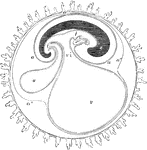
Membranes of the Ovum
Diagrammatic section showing the relation in a mammal between the primitive alimentary canal and the…
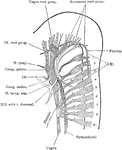
Peripheral Nerves of Human Embryo
Reconstruction of peripheral nerves of human embryo of five weeks.
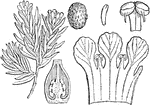
Flowering Pixiemoss
"Pyxidanthera barbulata. 1. corolla cut open; 2. perpendicular section of the ovary; 3. anther; 4. seed;…
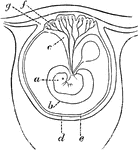
Early Formation of the Placenta
Diagram of an early stage of the formation of the human placenta. Labels: a, embryo; b, amnion; c, placental…
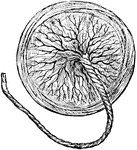
Human Placenta
The organ of attachment of a vertebrate embryo or fetus to the wall of the uterus or womb of the female.

Queen Sago
"Cycas circinalis; 1. a portion of a female frond; 2. section of the naked ovule; 3. ripe fruit; 4.…

Sweet Sarsaparilla
"Smilax glycyphylla; 1. a male flower seen from above; 2. a female flower; 3. a transverse section of…
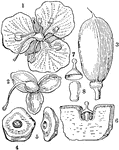
Spiderwort
"Aneilema crispatum; 1. a flower; 2. the calyx and pistil; 3. the capsule; 4, 5, seeds; 6. a section…
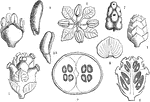
Turtleweed
"Batis maritima. 1. a male cone; 2. a male flower; 3. the same forced open to show the petals; 4. on…
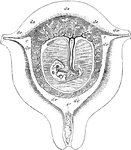
Uterus at Seventh Week of Pregnancy
Diagrammatic view of a vertical transverse section of the uterus at the seventh week of pregnancy. Labels:…

Water Pineapple
"Stratiotes aloides. 1. a flower and spathe; 2. a flower split open; 3. a fruit in its spathe; 4. a…

Wheat Grain
"A grain of wheat. Vertical section, showing (b) the endosperm, and (a) embryo." — Encyclopedia…

Wheat Grain
"A grain of wheat. Commencement of germination, showing (b) the pileola and (c) the secondary rootlets…
